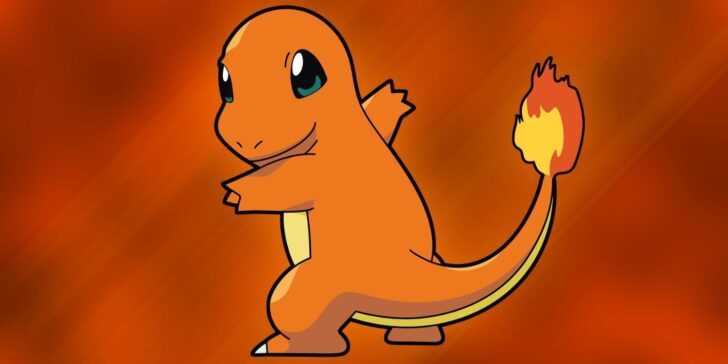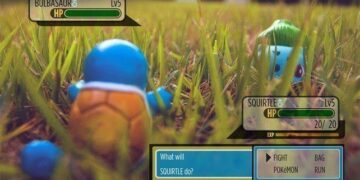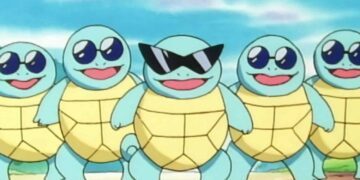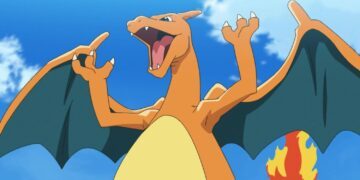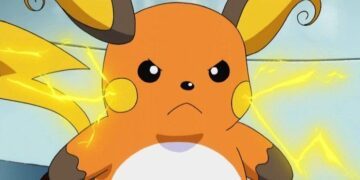One of the hardest things for me as a kid was deciding which starter Pokémon to choose.
At the time I was playing Pokémon Red, so naturally, I ended up choosing Charmander to be my very first Pokémon.
I’m not going to outright say that Charmander is the coolest when compared to Bulbasaur or Squirtle, but I’m also not going to deny it either.
What I will do is share with you a nice big chunk of facts, all about Charmander, so you can make the decision for yourself!
Charmander is one of the three starter Pokémon in the 1996 Pokémon Red and Blue games, which were released for the Game Boy.
Two years after Pokémon Red and Blue hit the US market, Pokémon Yellow was released. In this special edition, the player started with a Pikachu instead of choosing one of the original starter Pokémon. Fortunately for fans of Charmander, it’s possible to acquire one from an NPC (that’s a non-player character, for the uninitiated) later in the game.
Charmander returned as a starter Pokémon in the remakes of the original games, titled Pokémon FireRed and LeafGreen. The remakes were released for the Game Boy Advance in 2004.
In the Pokémon anime, Charmander is acquired early on by Ash Ketchum, the show’s protagonist. Although Ash catches many Pokémon during his travels, Charmander is one of his most commonly used Pokémon.
Ash Ketchum doesn’t actually catch his own Charmander in the anime. Ash and Brock find a Charmander out in the wild that’s been left behind by its trainer for being too weak. The Charmander has been out in the rain and is becoming weak, so Ash takes it to a Pokémon center to bring it back to full health. When Charmander sees what a true trainer’s love can be like, he changes loyalties and lets Ash catch him.
The origins of Ash’s Charmander are quite different in the manga The Electric Tale of Pikachu. A similar story is told, but instead of the trainer abandoning his Charmander for being weak, it is left behind as the trainer himself is injured and is taken to the hospital. In the manga, Ash is shown to have his own Charmander already.
In the anime, when Ash’s Charmander evolves into Charmeleon, its nature changes completely. Before it evolved, it was fiercely loyal to Ash for saving it from its previous thuggish trainer. After evolving into Charmeleon, it becomes stubborn and lazy, only fighting battles when it feels like it.
In 2017 Pokémon the Movie: I Choose You! was released, in which Ash’s Charmander behaved very differently when it evolved. Upon evolving into Charmeleon, it instantly recognized Ash’s authority and obeyed his every command with utmost loyalty.
Charmander is born with a flame at the end of its tail, and this flame is said to represent the Pokémon’s life force. When a Charmander’s flame goes out, it will die. A Charmander’s tail can also alert others to its mood, with the flame growing in size when enraged or flickering when happy. Ordinary water cannot put out its tail.
Charmander has two sequential evolutions, Charmeleon and Charizard. In the video games, Charmander evolves into Charmeleon when it reaches level 16 and then again into Charizard at level 36.
It was designed in such a way that it would be difficult to tell that it would eventually evolve into a Charizard.
Charmander stands at two feet (60 cm) tall, which makes it the tallest of all starter Pokémon.
Charmander also has the longest name out of all unevolved starter Pokémon.
Unsurprisingly, Charmander is a Fire-type Pokémon. There are 16 different Pokémon types as of Generation VI, with the types defining the properties of a Pokémon. A Water-type Pokémon would generally do very well against a Fire-type, while a Fire-type such as Charmander would do well against a Grass-type.
The artwork and game sprites for Charmander initially depicted it as having small spikes along its back. Over time the spikes disappeared, which makes Charmander appear a little more friendly and juvenile.
For a long time, depictions of Charmander were inconsistent, with the Pokémon sometimes having three fingers, and sometimes three fingers and a thumb. This inconsistency lasted all the way until Pokémon Black and White were released in 2010, from which point Charmander has had just three fingers.
Way back in 2001, a tiny island nation called Niue decided to commemorate Pokémon culture by minting five different coins, each with a different Pokémon depicted on them. Each coin was to the value of $1 NZ, with Charmander depicted on one of them.
Charmander was originally called Hitokage when the game was released in Japan. In an attempt to make Pokémon more interesting to American children, the names were changed to make them more descriptive. As such, Hitokage was renamed Charmander, combining the words “char” and “salamander”, as in a fire-salamander.
It’s said that the salamander that Charmander is named for is actually the mythical beast, rather than the actual lizard. In mythology, a salamander is a type of fire spirit, and as such is immune to fire. This comparison makes much more sense when we look at Charmander.
The release of Pokémon X and Y saw a new evolution for Charmander. Within this particular game, it’s possible for a Charizard to evolve into a Mega Charizard for the length of a battle. This new evolution has different abilities and even different appearances depending on whether you are playing Pokémon X or Y.
Charmander is actually the weakest of the original three starter Pokémon. Anyone who wished for a Charizard had to tough it out for the first parts of the game. Was it worth it? Absolutely!
Charmander’s direct predecessor in the Pokémon games is Cyndaquil, who we see in Pokémon Gold and Silver. The base stats for both Charmander, Cyndaquil, as well as their respective evolutions are identical. This trait is not shared with any following starter Fire-type Pokémon.
Readers of popular video game review site IGN ranked Charmander as the 37th best Pokémon of all time.
Charmander is featured a few times in the popular Nintendo Game Cube game Super Smash Bros. It’s possible to unlock an in-game trophy which represents Charmander. There’s also a stage in the game called “Saffron City,” in which Charmander can be seen.
Charmander is also one of the catchable starter Pokémon in the hit global phenomenon Pokémon GO, along with Squirtle and Bulbasaur.
As a man born in the 90’s I grew up with Pokémon. When I think about the glory days of playing Pokémon Red on my Game Boy Color I think of that impossible decision at the start of the game.
Charmander was the obvious choice, and I’m glad I did as it’s definitely one of the coolest starter Pokémon, especially when compared to the later generations!

